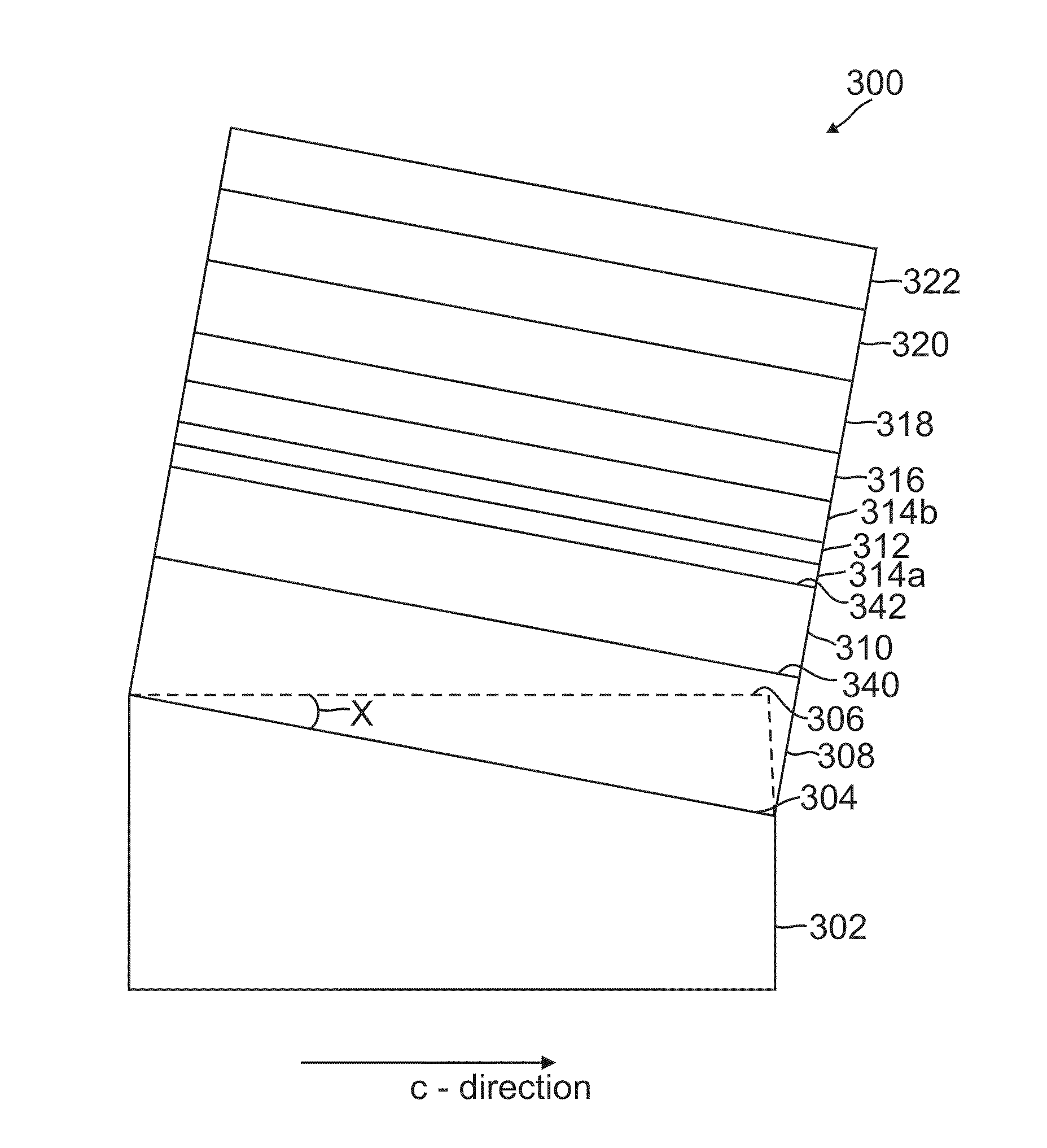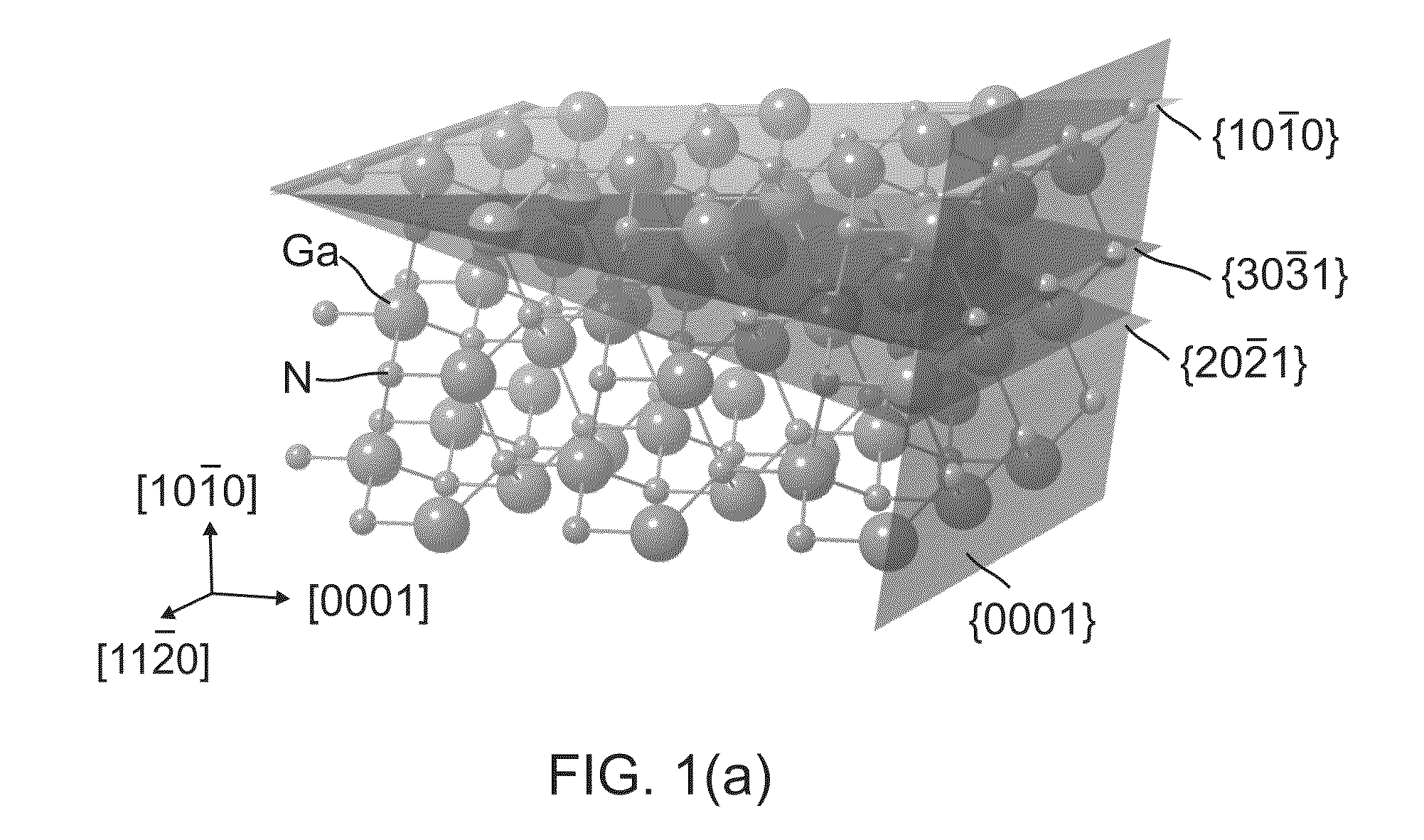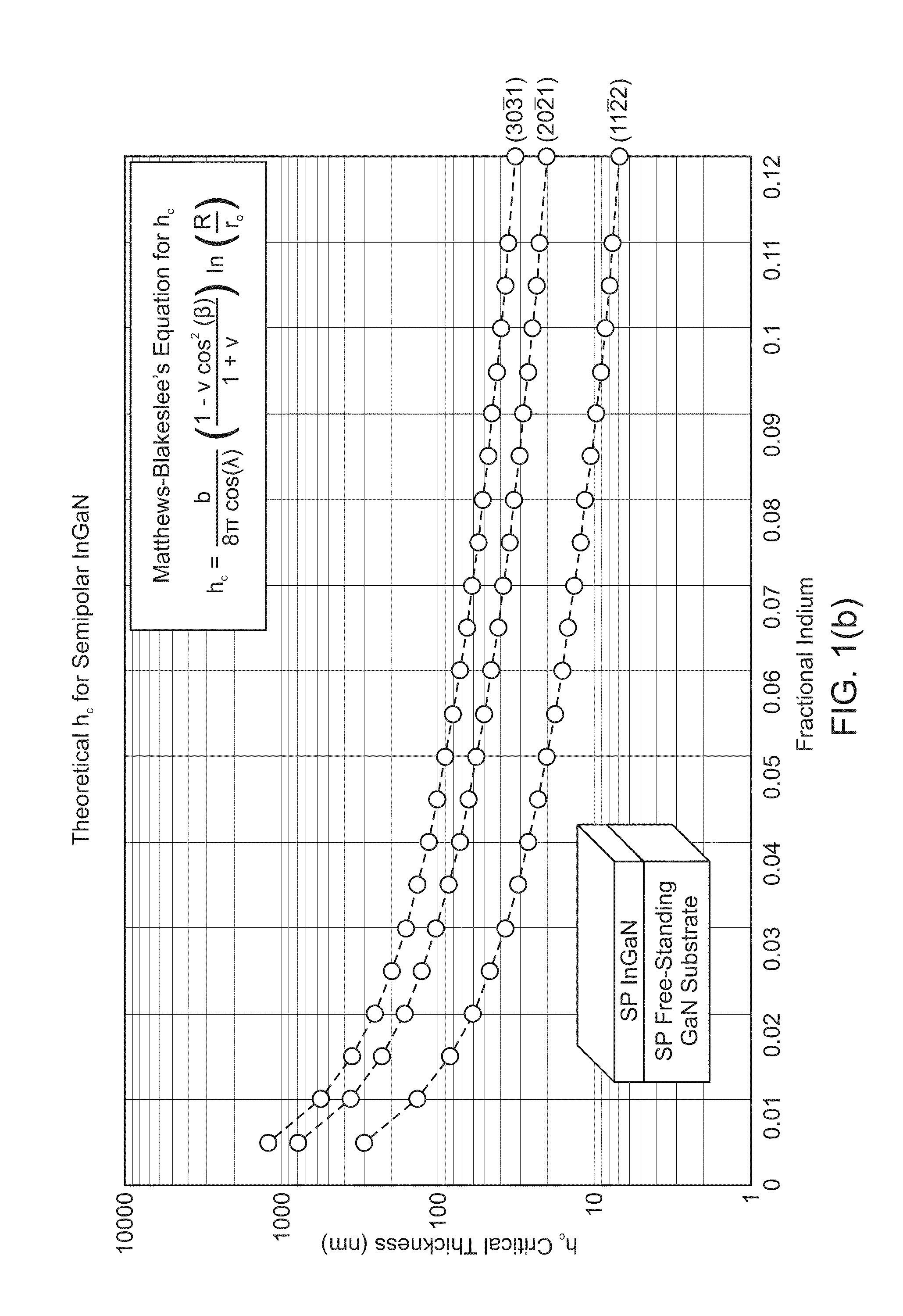Semi-polar iii-nitride optoelectronic devices on m-plane substrates with miscuts less than +/-15 degrees in the c-direction
a technology of iii-nitride and mplane, which is applied in the direction of semiconductor devices, lasers, semiconductor lasers, etc., can solve the problems of blue-shift in emission wavelength, qcse becomes more significant for long wavelength optoelectronic devices, and the m-plane lds has so far been limited to 500 nm lasing emission, etc., to achieve low qcse induced injection-current dependent blu
- Summary
- Abstract
- Description
- Claims
- Application Information
AI Technical Summary
Benefits of technology
Problems solved by technology
Method used
Image
Examples
Embodiment Construction
[0048]In the following description of the preferred embodiment, reference is made to the accompanying drawings which form a part hereof, and in which is shown by way of illustration a specific embodiment in which the invention may be practiced. It is to be understood that other embodiments may be utilized and structural changes may be made without departing from the scope of the present invention.
[0049]Overview
[0050](Al,Ga,In)N optoelectronic devices are grown on polar {0001}, non-polar {11-20} and {10-10}, and semi-polar {10-1-1}, {11-22} and {20-21} GaN crystal planes.
[0051]Lasers grown on polar and semi-polar planes suffer from polarization related electric fields in the quantum-wells that degrade device performance.
[0052]While non-polar {10-10} and {11-20} devices are free from polarization related effects, incorporation of high indium concentrations in {10-10} and high quality crystal growth of {11-20} devices have been shown to be difficult to achieve.
[0053]For example, suffic...
PUM
 Login to View More
Login to View More Abstract
Description
Claims
Application Information
 Login to View More
Login to View More - R&D
- Intellectual Property
- Life Sciences
- Materials
- Tech Scout
- Unparalleled Data Quality
- Higher Quality Content
- 60% Fewer Hallucinations
Browse by: Latest US Patents, China's latest patents, Technical Efficacy Thesaurus, Application Domain, Technology Topic, Popular Technical Reports.
© 2025 PatSnap. All rights reserved.Legal|Privacy policy|Modern Slavery Act Transparency Statement|Sitemap|About US| Contact US: help@patsnap.com



